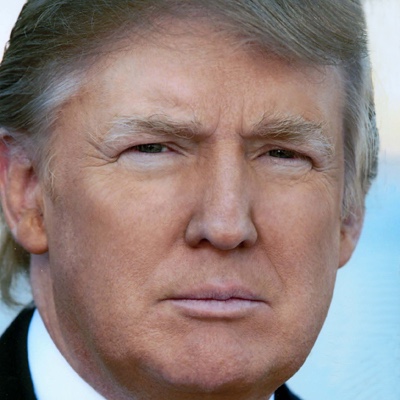It’s Possible Donald Trump Could Win a Smaller Percentage of the Popular Vote than Any Other Major Presidential Candidate

Donald Trump may be on his way to one of the worst popular vote percentage losses in all of Presidential election history -- and this was true even before the videotape surfaced showing his vile comments about women. It is probably that he will win about 20 states at least, and will have an electoral vote total in triple digits, but his percentage of the total popular vote could rival the worst examples in American history, a total of nine Presidential losers since the Civil War who had less than 40 percent of the popular vote.
The all time low vote winner is Republican President William Howard Taft, who faced a party revolt in 1912 from former President Theodore Roosevelt, who formed the most significant third party in American history, the Progressive (Bull Moose) Party. TR ended up second in the election results behind Democrat Woodrow Wilson, with 27.4 percent of the popular vote, 6 states and 88 electoral votes, the all time high for a third party nominee. As a result, President Taft ended up third, with only 23.2 percent of the vote, 2 states and 8 electoral votes.
The next worst performance was in 1924, when President Calvin Coolidge defeated West Virginia Democrat John W. Davis, with Wisconsin Senator Robert M. La Follette Sr. as the third party nominee on the Progressive Party, a revival of the 1912 party of TR, but more to the left of TR’s effort. With La Follette winning 16.6 percent of the vote, Davis ended up with only 28.8 percent of the vote, 12 states and 136 electoral votes.
 Ohio
Democratic Governor James Cox, the nominee in 1920 against Warren G.
Harding, received only 34.2 percent of the popular vote, winning 11
states and 127 electoral votes, a performance which could be the end
result in percentage for Donald Trump if the projections that have
developed turn out to be accurate.
Ohio
Democratic Governor James Cox, the nominee in 1920 against Warren G.
Harding, received only 34.2 percent of the popular vote, winning 11
states and 127 electoral votes, a performance which could be the end
result in percentage for Donald Trump if the projections that have
developed turn out to be accurate.
Kansas Republican Governor Alf Landon, the nominee in 1936 against President Franklin D. Roosevelt, won only 36.5 percent of the popular vote, along with two states and 8 electoral votes. So Landon matched in electoral votes what President Taft had been able to win in 1912.
Republican President George H. W. Bush, running for reelection in 1992 against Bill Clinton and third party nominee Ross Perot, suffered from the fact that Perot was able to gain the second highest popular vote percentage for a third party nominee, behind TR and ahead of La Follette with 18.9 percent of the vote. As a result, in a losing cause, Bush won 37.4 percent of the vote, 18 states and 168 electoral votes.
South Dakota Democratic Senator George McGovern was the Democratic nominee in 1972 against President Richard Nixon, and was only able to win 37.5 percent of the popular vote, and only Massachusetts and Washington DC, and 17 electoral votes.
New York Judge Alton B. Parker, the Democratic nominee in 1904 against President Theodore Roosevelt, was only able to win 37.6 percent of the popular vote, 13 states and 140 electoral votes.
Arizona Republican Senator Barry Goldwater, the nominee in 1964 against President Lyndon B. Johnson, was only able to win 38.5 percent of the popular vote, 6 states and 52 electoral votes.
Finally, Republican President Herbert Hoover, running for reelection against Franklin D. Roosevelt in 1932, had only 39.7 percent of the popular vote, 6 states and 59 electoral votes.
So a total of 9 times since the Civil War, a major party nominee won less than 40 percent of the national popular vote, with three times—1912, 1924, 1992—an independent or third party nominee complicating the election and causing a poor performance by the losing major party nominee—Taft, Davis, and Bush.
Three Presidents lost reelection because of a poor percentage of the popular vote—Taft, Hoover, and Bush.
Five of the nine candidates were Republicans—Taft, Hoover, Landon, Goldwater, and Bush, while four candidates were Democrats—Parker, Davis, Cox and McGovern.
Donald Trump could well end up in the company of these gentleman and end up the tenth nominee to score less than 40 percent of the national popular vote. We shall know very soon whether this is the case.